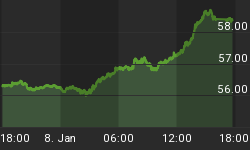4:30 UK May Retail Sales (exp 0.5%, prev 0.6%) 5:00 am E-12 May CPI y/y (exp 2.5%, prev 2.4%) 8:30 am US June Empire Manufacturing Survey (exp 10.9, prev 12.4) 8:30 am US Weekly Jobless Claims (exp 320K, prev 302K) 9:00 am US Apr Net Int'l Capital Flows - TICS (exp $55.0 bln, prev $69.7 bln) 9:15 am US May Capacity Utilization (exp 81.9, prev 81.9) 9:15 am US May Industrial Production (exp 0.2%, prev 0.8%) 12:00 pm June Philadelphia Fed Survey (exp 11.0, prev 14.0) 2:00 pm US Fed Chairman Bernanke Speaks.
Boosted predominantly by an overdose of inflationary data and the Fed's justifiably hawkish rhetoric, the US dollar may be tested by the law of diminishing returns as it encounters an array of potentially weak US data. The economic releases will deflect traders' attention from the inflation story to the slowdown story. The data will cover a broad array of releases, ranging from the job market (weekly jobless claims), manufacturing (industrial production, Empire survey and Philly Fed survey) and the trade imbalance (TICS data on foreign capital flows).
The April TICS should take center stage along with industrial production and the Philly Fed survey, but the Empire survey -- released by the NY Fed -- has proven to move the dollar in the past. After tumbling to an 11-month low of 12.4 in May, the June survey is expected to continue falling, reaching 12.4, which should weaken the dollar's foundation ahead of the TICS (9am NYT) and industrial production (9:15 am).
The reason we expect the April TICS to dip to $55 bln from March's $69.7 bln is the damage suffered by the dollar in the month of April. In fact, April's dollar decline was the biggest monthly decline since December - as measured by Fed's Broad Dollar Index. Historically, the weakest months for the TICS data have been those of significant dollar declines as foreign investors grow averse to US assets due to the currency factor. The most significant and recent cases were; Dec 2004, March 2005, May 2005 and December 2005. Considering the April $62 bln trade deficit, a TICS report at or below $60 bln should help knock off the dollar.
The April TICS may have avoided a disastrous showing due to the mid-month rebound in US stocks -- S&P index. But the May TICS report -- due in July (same month when advanced Q2 GDP release should show a significant slowdown and no FOMC meeting) promises to offer a gloomy figure due to the dollar slide and the 3% drop in the S&P in May.
The June Philly Fed survey is expected to have dropped to a 5-month low of 11.0 from May's 14.4, but the more dangerous devil lies in the detail. The new orders and employment component fell to 8-month and 24-month lows respectively in the May report (see chart above). Further deterioration should weigh significantly on the dollar.
NOTE: Kickoff time of the England-Trinidad/Tobago WC soccer match is due to coincide with the release of the Philly Fed survey, therefore may ease liquidity and potentially intensify volatility in market moves.
USDJPY seen dragged to 114 on weak US data
The Bank of Japan expectedly voted unanimously to maintain its zero-interest-rate policy, and will reduce the outstanding balance of current account deposits held by banks to just under 10 trln yen by end of the week. Markets showed no reaction to BoJ Governor Fukui 's remarks that he will unload is investment in the scandal-ridden Murakami fund, but should scrutinize his assessment for the economy for any clues on when the Bank will raise rates. Considering the ongoing stock market malaise and the fact that the FOMC will not meet in July, we see very little chance for a July rate hike by the BoJ. Thus, we see a 40% chance of a rate hike in August and a 60% chance in September.
One day after strong Chinese money supply data drove up Asian FX on speculation that China will allow faster appreciation in the yuan vs the dollar, the People's Bank of China said it will step up the issuance of bonds to the more aggressive lenders as a way to rein in bank lending. These market based measures following recent current account liberalization reform of the last 2 months comprise the building blocks to further yuan appreciation. We see a 60% probability of an actual 1.5%-2.0% revaluation in July. Alternatively, the central bank could resort to doubling its 0.3% permitted daily fluctuation band against the US dollar.
A TICS report below $60 bln should weigh on the dollar, and depending on the extent of the slowdown in industrial production, USDJPY risks being dragged to 114.40, with further weakness seen stabilizing at 113.90. A stronger data showing, or (and) the usual hawkishness from Fed Chairman Bernanke at 2:00 pm NYT could keep the dollar supported above 115.00, but unlikely to revisit its 115.42 high. The fact that 100 day MA is crossing below the 200 day MA should help drag the pair towards the low 114.00s.
Euro to target $1.27
We expect the combination of a weak US TICS (at or less than $60 bln) and general softening in rest of day's US reports to help the euro regain Wednesday's 1.2650 high towards the 1.2690s. The 2.5% expected May inflation from the Eurozone should match the advanced/flash release and may offer the euro a slight boost despite claims by the ECB that it will continue its gradual tightening pattern. But the extent of the euro's advance above 1.2690s will be determined by the components of the Philly Fed survey.
Although Fed Chairman Bernanke's 2:00 pm speech will cover energy, we caution against the possibility of dollar-positive statements emerging from any reiteration of the upside inflation risks.
















